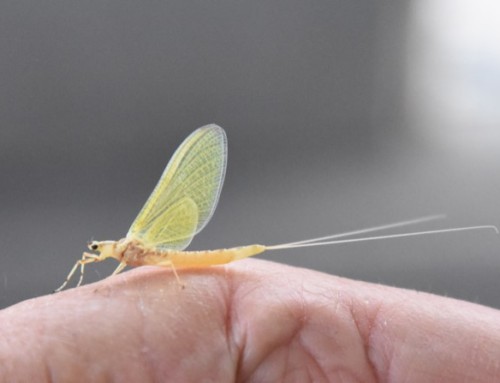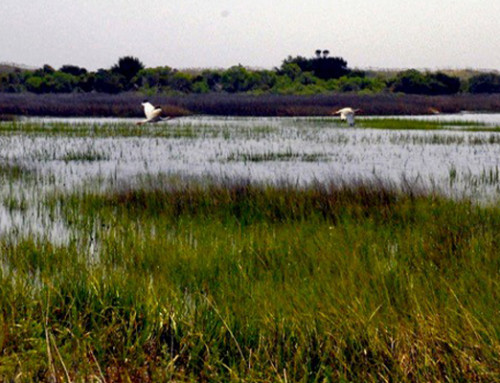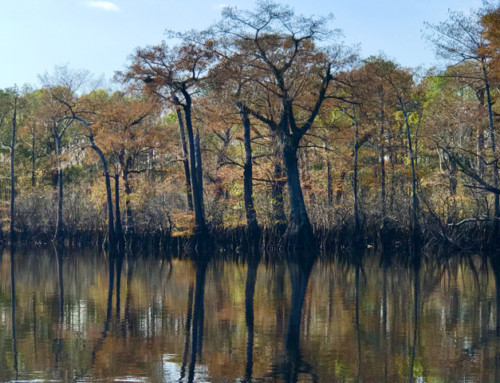A Photo Series from NC photographer and naturalist Tom Earnhardt
No Silent Spring
Nature has a rhythm, a script and a calendar, all of which remind us of what is coming. Most of us still rely on paper calendars on our walls or the digital calendars in our smartphones (providing daily messages and musical alerts). Nature’s system is much more elegant and sophisticated than humankind’s rudimentary reminders.
I am convinced that each of us still has part of a “natural calendar” in our DNA. With a little practice, we can all reconnect and follow nature’s cues and signals like the acts of a play or the movements of a symphony. This schedule of events is revealed to us by the arrival of birds, the sounds of insects, the blooming of wildflowers and even the by the display of multiple seasons in a single landscape! In an April photograph taken a few years ago (see below), you can see the changing of seasons at Grandfather Mountain with the vivid greens of spring at the bottom, hints of color in the middle, and the somber tones winter on top.
This week, I could not help but remember the first time I read Rachel Carson’s Silent Spring in the late 1960s. Carson’s warning of a coming springtime without sound was born out of her concern about the unregulated use of pesticides, herbicides and industrial chemicals. In the coming weeks millions of North Carolinians and Americans will be required to shelter-in-place to protect our health and that of our neighbors. Because we cannot travel to the wild places places normally available to us, we will not be able to experience fully the voices and instruments of nature’s symphony of springtime. For us it may be a time of quiet—a silent spring—but in nature all members of her orchestra and choir are tuning their instruments and raises their voices. Remember those sounds!
I am thankful for the women and men whose tenacity and vision gave rise to the North Carolina State Park System more than 100 years ago, which now protects premiere examples of biodiversity and wild landscapes. I’m also thankful for The Nature Conservancy, our 25 regional land trusts, and the thousands of farmers and landowners who have preserved a special piece of the “Tarheelsphere.” I also celebrate the North Carolina Supreme Court, which for over 200 years has upheld the Public Trust Doctrine, ensuring every North Carolinian the right to walk on oceanfront beaches, explore coastal estuaries and navigate our largest rivers. Stewardship of natural resources comes in many forms.
North Carolina’s malls, offices, schools and streets will be quiet for a few weeks. Until the heavy veil has lifted, I hope the images below, and in coming weeks, will serve as reminder and respite for anyone who wants to stay connected to the natural world. Even though many parks are closed and we are temporarily restricted in our movements, there is no silent spring in North Carolina!
Please stay healthy in the coming days, while expressing appreciation to those whose work and sacrifice ensure our safety and well-being. As always, please feel free to share these thoughts and photographs with anyone.
With warmth, appreciation and determination,
Tom
In this April photograph of Grandfather Mountain you can see a whole segment of nature’s calendar, with spring at the bottom and winter still holding sway at the top.

Native coral honeysuckle outside my back door in Raleigh bloomed last week and signaled that hummingbirds on their northern migration would soon be stopping to refuel. The first ruby-throated hummingbird of 2020 appeared in our back yard, right on cue, at 10:30 AM, Saturday, 28 March.

The first week in April has always been a great “herp” (reptiles and amphibians) time in North Carolina. Frogs are singing, snakes and turtles are basking, and in our coastal counties, alligators up to 12-feet in length remind us that truly wild things still exist! Frogs are easy to hear, but difficult to see (photo 1). While I photographed this harmless brown water snake sunning near the Lumber River, a caterpillar tried to tickle its nose (photo 2). In April, 2019 this large alligator (photo 3) wanted to be photographed in a feeder creek of the Cape Fear River near Southport.



Perhaps the thing I like the most about early April is that we can actually see rock formations, hidden trees and wild creatures before heavy canopies of late spring and summer obscure the views. We can see ancient trunks of cypress and tupelo through the new growth of early spring on coastal rivers like the Black, Northeast Cape Fear, and Chowan (photo 1). Early April is a great time to get photographs of the rugged cliffs at at Pilot Mountain (photo 2) or of the massive granite face of Stone Mountain (photo 3 ).



Before they become invisible in the deep summer canopy, early spring is the best time to see and photograph neotropical warblers. More than 36 species of these magnificent birds, each with with a unique voice and song, find homes along coastal rivers or on 6,000 foot peaks from April to late summer. I photographed this Canada warbler (photo 1) on Roan Mountain and the Prothonotary warbler (photo 2) on the Black River.


Every symphony has an audience and a conductor. Chipmunks in my rock wall often have front row seats (photo 1) while this Crabtree Lake bald eagle always demands a box seat (photo 2). Our conductor from the Wilmington area, wearing a gray evening-suit, is a yellow-crowned night heron (3). In the coming weeks, there will still be time to check nature’s calendar and get a ticket to her symphony.



All photos in this series are by Tom Earnhardt. Narration by Tom Earnhardt except slight editorial corrections






